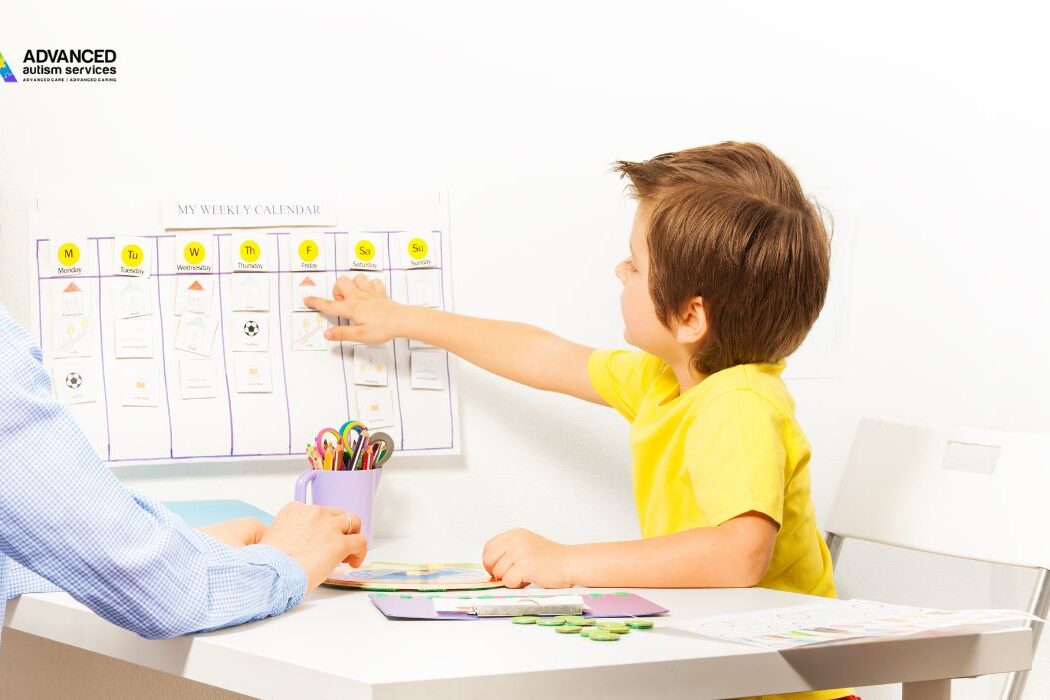Applied Behavior Analysis (ABA) is a scientifically validated approach to understanding behavior and how it’s affected by the environment. It’s widely recognized for its effectiveness in supporting individuals with autism spectrum disorder (ASD) and other developmental challenges. While ABA therapy often takes place in clinical settings, the role of the home atmosphere in ABA treatment is a crucial yet sometimes overlooked aspect.
Creating a Supportive Home Environment
The home environment plays a pivotal role in reinforcing and generalizing skills learned during ABA therapy sessions. Here’s why it holds such significance:
Consistency and Generalization
ABA therapy aims to teach and reinforce positive behaviors. However, the accurate measure of success lies in the ability of individuals to apply these behaviors consistently across various settings. The home serves as a primary environment where learned behaviors are put into practice daily. Consistency in implementing ABA strategies at home enhances the generalization of these behaviors into other settings like school, community, or social gatherings.
Family Involvement and Reinforcement
The involvement of family members in the therapy process is invaluable. A supportive home atmosphere encourages family members to understand and reinforce ABA techniques, ensuring continuity in the application of strategies between therapy sessions. When parents and caregivers implement ABA principles consistently, it significantly enhances the individual’s progress.
Comfort and Familiarity
The home is a place of comfort and familiarity. Individuals undergoing ABA therapy might feel more at ease practicing new skills or behaviors in a familiar setting. This comfort can lead to increased engagement and a higher likelihood of successful skill acquisition.
Individualized Learning Opportunities
The home environment provides unique opportunities for personalized learning experiences. ABA therapists can tailor interventions to specific situations that occur at home, making it easier for individuals to apply newly acquired skills in real-life scenarios.
Strategies for Cultivating a Supportive Home Atmosphere
Creating an environment conducive to ABA treatment involves collaboration between therapists, family members, and individuals undergoing therapy. Here are some strategies to foster a positive home atmosphere:
Communication and Collaboration
Regular communication between ABA therapists and family members is critical. This ensures that everyone is aligned in their approach and understands the strategies being employed. Therapists can guide how to incorporate ABA techniques into daily routines.
Consistent Implementation
Consistency is crucial for reinforcing desired behaviors. Establishing a routine that incorporates ABA strategies ensures that individuals have repeated opportunities to practice and generalize their skills.
Creating Structured Environments
Structured environments help individuals with ASD thrive. Establishing clear routines, visual schedules, and designated areas for specific activities can contribute to a more organized and predictable environment.
Positive Reinforcement
Using positive reinforcement techniques, such as praise, rewards, or tokens, encourages and motivates individuals to continue practicing desired behaviors.
Nurturing a Supportive Environment
Flexibility and Patience
While consistency is crucial, it’s also important to be flexible and patient. Individuals undergoing ABA therapy might face challenges in applying new behaviors. Patience and understanding during these moments are crucial to fostering a supportive atmosphere.
Adaptability in Daily Routines
Being adaptable within established routines is essential. As individuals progress in their ABA therapy, adjustments to routines might be needed to accommodate their growth and evolving needs.
Learning Through Everyday Activities
Home activities such as mealtime, playtime, and chores present valuable opportunities for learning. Integrating ABA strategies into these everyday activities helps in the natural application of learned behaviors.
Overcoming Challenges
Creating an optimal home atmosphere for ABA treatment might encounter challenges. Time constraints, conflicting schedules, or difficulty implementing strategies can be common hurdles. However, addressing these challenges through open communication with therapists and seeking their guidance can help overcome such obstacles.
The Impact on Progress
A positive home atmosphere directly influences the effectiveness of ABA therapy. When individuals experience consistency, support, and understanding at home, it significantly enhances their ability to acquire and apply new skills.
The Role of Therapists
ABA therapists play a pivotal role not only in providing therapy sessions but also in guiding and educating families on how to create an environment conducive to the success of ABA treatment. Their expertise and guidance are invaluable in ensuring a holistic approach to therapy.
Sustaining Progress Through Collaboration
Regular Assessment and Adjustments
Periodic assessment of the home environment’s effectiveness in supporting ABA goals is vital. Regular discussions with therapists help in identifying areas for improvement and making necessary adjustments.
Building a Support Network
Engaging with support groups or connecting with other families undergoing ABA therapy can be immensely beneficial. Sharing experiences, strategies, and successes creates a supportive network that fosters encouragement and understanding.
Self-Care for Caregivers
The journey of supporting someone undergoing ABA therapy can be demanding. Caregivers need to prioritize self-care. Taking breaks, seeking support when needed, and maintaining personal well-being contribute to a healthier and more supportive home environment.
Embracing Success and Growth
The impact of a conducive home atmosphere extends beyond the realm of ABA therapy. It nurtures an environment where individuals not only learn and grow but also feel supported, valued, and understood.
Conclusion
In ABA treatment, the home environment is pivotal for reinforcing learned behaviors. Consistency, family involvement, and a comfortable setting enhance skill application. Strategies like clear communication and flexibility support this atmosphere. Despite challenges, collaboration, and caregiver self-care sustain progress. This cheerful home atmosphere goes beyond therapy, fostering growth and support for individuals with developmental difficulties and nurturing a brighter future beyond treatment sessions.
FAQs
Why is the home atmosphere important in ABA treatment?
The home serves as a primary environment where individuals can practice and generalize behaviors learned during ABA therapy. Consistency at home aids in applying these behaviors across various settings.
How does family involvement impact ABA therapy?
Family involvement is invaluable. When family members understand and reinforce ABA techniques, it ensures continuity in implementing strategies between therapy sessions, significantly enhancing progress.
What role do comfort and familiarity in the home play in ABA therapy?
The home’s comfort and familiarity provide a conducive setting for individuals undergoing ABA therapy, increasing their engagement and likelihood of successfully acquiring new skills.
What are the strategies for creating a supportive home atmosphere in ABA treatment?
Strategies include consistent implementation of ABA techniques, establishing structured routines, utilizing positive reinforcement, and integrating therapy into daily activities like mealtime or playtime.
How can caregivers overcome challenges in maintaining a supportive home environment for ABA treatment?
Open communication with therapists, adapting to evolving needs, seeking support from support groups, and prioritizing caregiver self-care is essential in overcoming obstacles.
What impact does a positive home atmosphere have on ABA therapy progress?
A positive home atmosphere significantly influences the effectiveness of ABA therapy. Consistency, support, and understanding at home enhance an individual’s ability to acquire and apply new skills.
What role do ABA therapists play in creating a supportive home environment?
ABA therapists guide and educate families on creating an environment conducive to ABA treatment. They provide expertise and guidance, ensuring a holistic approach to therapy.
How can progress be sustained through collaboration in ABA treatment?
Regular assessment, building support networks, and prioritizing caregiver self-care contribute to sustaining progress. Engaging with therapists and support groups fosters encouragement and understanding.
Does the impact of a conducive home atmosphere extend beyond ABA therapy?
Absolutely, it nurtures an environment where individuals not only learn and grow but also feel supported, valued, and understood, impacting their overall well-being beyond therapy sessions.
How does individualized learning occur in the home environment during ABA therapy?
ABA therapists tailor interventions to specific situations at home, creating personalized learning experiences that make it easier for individuals to apply newly acquired skills in real-life scenarios.
What impact do structured environments have on individuals with ASD in ABA treatment?
Structured environments, with clear routines and designated areas, help individuals with ASD thrive by providing organization and predictability, aiding in their comfort and skill development.
Can challenges in implementing ABA strategies at home hinder progress?
Challenges like time constraints or conflicting schedules can occur, but addressing them through open communication with therapists and guidance can help overcome obstacles, ensuring progress.
Why is flexibility emphasized alongside consistency in ABA therapy at home?
While consistency is crucial, being flexible within established routines allows for adjustments, accommodating individuals’ growth and evolving needs in their ABA therapy journey.
How do everyday activities contribute to ABA therapy in the home?
Activities like mealtime, playtime, and chores offer valuable learning opportunities. Integrating ABA strategies into these activities aids in the natural application of learned behaviors.
What long-term benefits does a positive home atmosphere offer individuals beyond ABA therapy?
A positive home atmosphere nurtures an environment where individuals not only acquire new skills but also feel supported and valued, contributing to their long-term growth and well-being.
How does consistent implementation of ABA strategies at home impact skill development?
Consistent implementation of ABA strategies fosters the reinforcement of desired behaviors, providing individuals with repeated opportunities to practice and generalize their skills across various settings.
Can difficulties in adjusting daily routines affect progress in ABA therapy at home?
Yes, being adaptable within established routines is crucial. Adjustments may be needed as individuals progress in their therapy to accommodate their evolving needs and ensure continued growth.
What steps can families take to promote a more supportive environment for ABA therapy at home?
Families can prioritize clear communication, embrace flexibility, engage in positive reinforcement, and seek guidance from therapists to create an optimal and nurturing home environment for ABA treatment.




